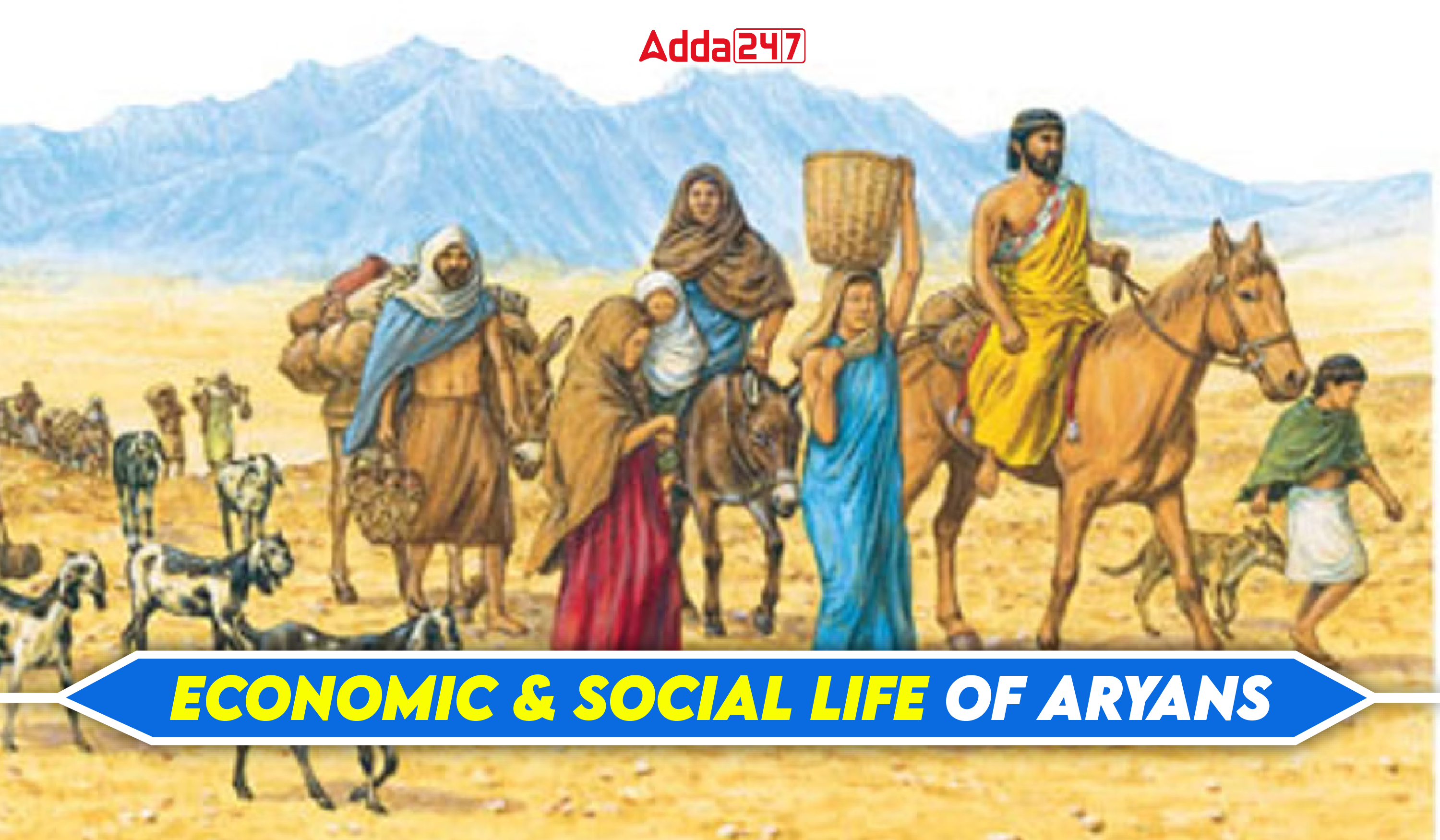Table of Contents
The Aryans’ primary sources of income were agriculture and cow farming, and their diet consisted primarily of grains like barley and rice. Social arrangements revolved around families, with the father, referred to as the “Grihapati,” at the head of a joint family. While they valued noble character, they also had slaves and lower-status individuals. Despite social distinctions, tribal communities maintained some egalitarian principles. Cultural activities like music and dance were integral to their social life.
Economic and Social Life of Aryans
When the culture of the Indus Valley started to break down, an Aryan or Aryanic civilization developed in India under the leadership of its people, a member of the greater Indo-European group, the term “Arya” suggested a person of renown. From the northwest, they migrated to India.
The Aryans had a diverse diet consisting of both vegetable and animal foods. Staple foods included rice, barley, beans, and sesame. Additionally, they consumed bread, cakes, dairy products like milk, ghee, butter, and curd, along with fruits. While they slaughtered animals such as fish, birds, goats, rams, bulls, and horses for food, the slaughter of cows was prohibited. They also indulged in intoxicating liquor called “Sura,” which was a brandy made from corn and barley, as well as the juice of the soma plant.
Economic Life in the Vedic Age
- The main occupation was cattle rearing, and wealth was measured by the number of cattle.
- Agriculture involves clearing forests for cultivation.
- Metals like copper, iron, and bronze were used.
- Some worked as goldsmiths, potters, spinners, and carpenters.
- Taxes were levied as Bali and Bhaga during the Vedic Period.
- Transactions were made using gold coins called Nishka.
- Rivers were utilized for transportation.
- The barter system was common for trade.
Social Life in the Vedic Age
- Society was tribal but egalitarian.
- Aryans were fair-skinned, while the native inhabitants were dark-skinned, creating a social distinction.
- Dasas and Dasyus were considered slaves along with the Shudras.
- Tribal chiefs held superior positions in society.
- Society was divided into warriors, priests, and people following a similar pattern as in Iran, along with Shudras.
- Women slaves were primarily engaged in domestic tasks.
- Division based on occupation was prevalent.
- Rig Veda depicts a patriarchal society where families were headed by Grahapatis.
- Both men and women wore clothes made of cotton and adorned themselves with numerous ornaments.
- Common food items included wheat, barley, milk, and milk products.
- Cows were considered sacred, so consuming their meat was prohibited.
- Entertainment activities included dance, music, chariot racing, and horse racing.
- Upper-class women enjoyed relatively equal rights compared to men.
Marriage Life
- Generally, monogamy was practiced, but polygamy was common in royal families.
- Sati and child marriage were not prevalent, and instances of widow remarriage can be found in the Rig Veda.
Administrative Setup
- Villages, called Gramas, were formed by groups of families or Kulas, led by a Gramani.
- Several villages are made up of a Vis, overseen by a Vishyapati.
- Tribes, or Janas, like Bharatas, Yadus, Matsayas, and Purus, held the highest political authority.
- The king, known as the Rajan, led the Jana and was assisted by priests or army commanders.
Religion in the Vedic Age
- Religion in the Vedic Period:
-Early Aryans worshipped elemental gods, with Indra, also known as Purandara, the god of rain and destroyer of forts, holding utmost importance.
-Agni, the fire god, was revered in the second place, followed by Varuna, the water god, in the third position.
-Other significant elements included Prithvi (earth) and Vayu (wind). - Female deities like Aditi and Ushas were worshipped as goddesses of dawn.
- In total, there were 33 gods in the Vedic pantheon.
- Worship focused on desires such as children, cattle, food, health, and wealth rather than ending misery.
- Offerings to the gods included milk, vegetables, ghee, and grains.
God and Their Roles
In the Vedic period, gods played crucial roles representing various aspects of nature and existence. Indra brought rain and storms, Agni bridged the divine and human realms, and Varuna upheld natural order. Soma was a sacred drink, Prithvi symbolized the Earth, and Aditi represented eternity. Usha personified dawn, and Savitri embodied divine energy. Each deity held significance in Aryan life, guiding them spiritually and symbolizing cosmic forces.
| Indra |
Brings rain, thunder, and storms
|
| Agni |
Intermediately between God and one hand of the people
|
| Varuna |
It was supposed to uphold the natural orders
|
| Soma | Sacred drink |
| Prithvi |
Goddess of Earth
|
| Aditi |
Goddess of Eternity
|
| Usha |
Goddess of Dawn
|
| Savitri |
Gayatri mantra is devoted to Goddess Savitri
|



 TSPSC Group 1 Question Paper 2024, Downl...
TSPSC Group 1 Question Paper 2024, Downl...
 TSPSC Group 1 Answer key 2024 Out, Downl...
TSPSC Group 1 Answer key 2024 Out, Downl...
 UPSC Prelims 2024 Question Paper, Downlo...
UPSC Prelims 2024 Question Paper, Downlo...





